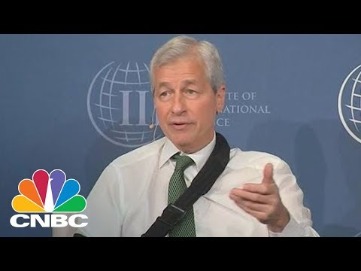Contents

However, the second candle indicates indecision, which could be a sign that a reversal is on the cards. Then, the long green candle confirms that the reversal is underway. Technical analysis is based on the principle that chart patterns will repeat themselves, resulting in the same price action most of the time. This Doji has a small body with equally long upper and lower shadows. The standard Doji is considered to be a neutral pattern, but it can still be a useful tool for traders. An example of Doji is when bulls push prices upward after the market opens, but this is rejected and the prices are pushed lower by bears.

- The opposite pattern of a gravestone doji is a bullish dragonfly doji.
- Which means buying sentiment may no longer be strong enough to sustain the uptrend.
- The doji is a single-session pattern, which means it is only comprised of one candlestick.
- Doji candlesticks can look like a cross, inverted cross, or plus sign.
Fans of doge disagree, sometimes passionately, about how to pronounce doge. Common pronunciations are “dawj,” “dohj” and “dogue” , but others like “doggy” also exist. The doge meme exploded from there, featured in numerous photoshopped images, usually with captions depicting the dog’s thoughts. It even spread to the point of spawning merchandise, like t-shirts and coffee mugs. Doge became a YouTube Easter egg, a cameo in a Weird Al Yankovic video, and appeared on the car of Nascar driver Josh Wise.
Gravestone Doji: How to tell when the market is about to reverse lower…
Long-Legged Doji patterns can emerge at the top or at the bottom of trends signaling a change in direction. For example, if the market had been trending downward and then the Long-Legged Doji pattern emerged, it may signify the start of an upward trend. As such, traders can use this pattern to make decisions about choosing the time when to buy or sell. Although rare, a doji candlestick generally signals a trend reversal indication for analysts, although it can also signal indecision about future prices.

A https://en.forexbrokerslist.site/ does not occur frequently and is therefore not reliable or a trustworthy indicator on its own. It must be used with other chart pattern analysis techniques in order for a trader to make an informed decision. Dragonfly Doji – A bullish reversal pattern that occurs at the bottom of downtrends.
Examples of Gravestone Doji
The best way to https://forex-trend.net/ these Doji patterns is to look for them at the end of a pullback in a trend. In an up-trending market, look for the Dragonfly Doji, Morning Doji Star, Harami Cross, or Inside Bar when the price pulls back to a support level. Here, those patterns are more likely to be the beginning of a new upswing, so you are looking to go long. The Dragonfly Doji is more like the bullish pin bar , while the Gravestone Doji acts like the Shooting Star pattern. The Harami Cross pattern and Doji Inside Bar pattern (where high-legged Doji is the mother bar) can give a bullish or bearish signal, depending on the direction of the inside bar breakout.
Forex Admin is a blog where you can find an in-depth analysis of Forex Brokers, Stocks, CFDs, ETFs, and other financial instruments to make informed decisions. The longer upper side of the gravestone Doji, also known as a ‘shadow’, suggests that the present market trend may be coming to an end and that the market could now be turning around. Look closely to define which type of Doji it is — this step is very important.
Many positive candles indicate an overbought market, and vice versa. One of our favorite ways of measuring whether a market is overbought or oversold, is with the RSI indicator. When the RSI shows high readings, then the market is overbought, and when it shows low readings, it’s oversold. The close and open should be located in the middle of the candle’s range.
In this article, we’ve had a look at the long-legged https://topforexnews.org/ pattern, its meaning and how to improve it. In addition to that, we’ve also provided two example strategies, that hopefully will help you come up with ideas for your own strategies. To ensure that the market has gone down before we act on a signal, we demand that the close is lower than the close 5 bars ago. In addition to the above filter, we’ll also make use of the Bollinger bands indicator to measure volatility in the market.
Gravestone Doji – A bearish reversal occurring at the top of uptrends. In Japanese, “doji” (どうじ/ 同事) means “the same thing,” a reference to the rarity of having the open and close price for a security be exactly the same. Depending on where the open/close line falls, a doji can be described as a gravestone, long-legged, or dragonfly, as shown below. The presentation of the Gravestone Doji at the top of an uptrend signals the conclusion of the trend, and the upswing is most certainly over.
Why integrate long legged doji candlestick into your trading strategy?
It is not a good sign for bulls in uptrends – especially in higher time frames, such as 4 hours or daily candles, but the notion applies to all of the time frames. The Dragonfly Doji is inverted upside down to make a gravestone Doji design. The opening, low, and close prices are virtually identical, but the high price is significantly higher. Buyers were strong early on – but by the close, they would have given up all their gains, and sellers had pulled the price all the way down to the open. Successful traders will typically wait until the following day to verify the possibility of an uptrend after a Dragonfly. The Dragonfly should be verified by waiting for trend confirmation on the following day.

Likewise, if the Doji forms after an extended uptrend, it could signal that bulls are running out of steam and that a reversal to the downside is possible. As such, traders should always be on the lookout for Doji patterns when analyzing price charts. A doji candle chart occurs when the opening and closing prices for a security are just about identical. If this price is close to the low it is known as a “gravestone,” close to the high a “dragonfly”, and toward the middle a “long-legged” doji. The name doji comes from the Japanese word meaning “the same thing” since both the open and close are the same.
To understand what this candlestick means, traders observe the prior price action building up to the Doji. The Doji pattern forms at the top or at the bottom of a trend, as well as during periods of consolidation. Although there are various types of Doji patterns, they all share one key trait — that is, indecision. Depending on the type, this pattern can signal a possible end of a current trend.
When the market opens, bullish traders push prices up while bearish traders reject the higher price and drive it back down, forming a Doji. Bulls may also fight back and raise prices after bears attempt to bring them as low as possible. The market narrative is that the bulls attempt to push to new highs over the session but the bears push the price action to near the open by the session close.
For more information on the different types of Dojis and what the patterns indicate, read our article on Types of Doji Candlesticks. A single Doji is usually a good indication of indecision however, two Dojis , presents an even greater indication that often results in a strong breakout. The Double Doji strategy looks to take advantage of the strong directional move that unfolds after the period of indecision. Hello Rayner, since I knew a while ago the real meaning of the Doji has been trading with very good results, especially in trend markets.
Once either trend line is broken, there may be a substantial move in the direction of the break. In all of these patterns, the market is in a period of consolidation that is often accompanied by falling volatility and volume. The simplest method of confirming a hammer is to see whether the previous trend continues in the next session.
The Dragonfly Doji is a bullish pattern that can indicate a reversal of a price downtrend and the start of an uptrend. Note that most traders will verify the possibility of an uptrend by waiting for confirmation the following day. The Doji pattern is formed when a market’s opening and closing prices in a period are equal – or very close to equal. So whatever happened within the candlestick itself, by the end of the session neither buyers nor sellers had the upper hand.
It’s common to see the Four-Price Doji in markets where trading volume and liquidity is extremely low. In a strong trend or healthy trend, the market is likely to “bounce off” the Moving Average. However, it’s not long before the buyers took control and fought their way back higher.
The Doji is a transitional candlestick formation that signifies an equilibrium in the opposing market forces — what some analysts may call indecision between bulls and bears. It simply shows that at the end of the trading session, neither the bulls nor the bears can claim victory because the price closed around the same price level where it opened. A spinning top is a candlestick pattern with a short real body that’s vertically centered between long upper and lower shadows. With neither buyers or sellers able to gain the upper hand, a spinning top shows indecision.

